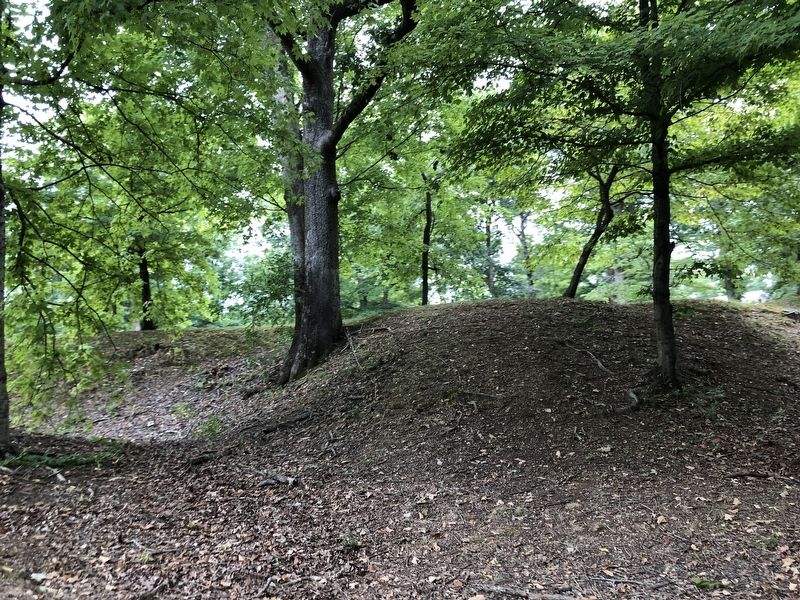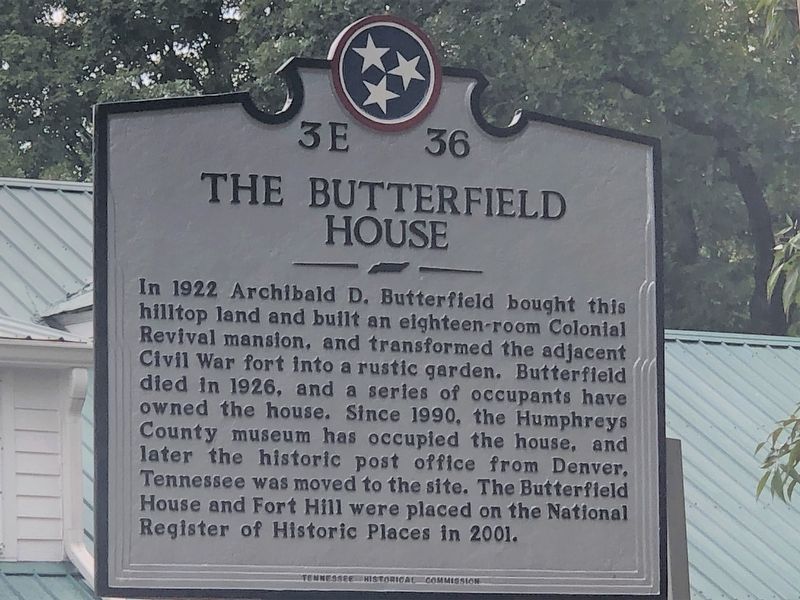Waverly in Humphreys County, Tennessee — The American South (East South Central)
The Butterfield House
Erected 2022 by Tennessee Historical Commission. (Marker Number 3E 36.)
Topics and series. This historical marker is listed in these topic lists: Architecture • Forts and Castles. In addition, it is included in the Tennessee Historical Commission series list. A significant historical year for this entry is 1922.
Location. 36° 4.889′ N, 87° 47.536′ W. Marker is in Waverly, Tennessee, in Humphreys County. Marker can be reached from Fort Hill Road, 0.2 miles east of South Church Street (Tennessee Route 13). Touch for map. Marker is at or near this postal address: 201 Fort Hill Rd, Waverly TN 37185, United States of America. Touch for directions.
Other nearby markers. At least 8 other markers are within walking distance of this marker. Welcome to Fort Waverly & The Humphreys County and Civil War Museum (a few steps from this marker); Fort Waverly (within shouting distance of this marker); Fort Hill at Waverly (within shouting distance of this marker); Fort Hill (about 600 feet away, measured in a direct line); Reynoldsburg (approx. 0.2 miles away); Humphreys County War Memorial (approx. 0.2 miles away); Battle of Johnsonville (approx. 0.2 miles away); Humphreys County (approx. 0.2 miles away). Touch for a list and map of all markers in Waverly.
Regarding The Butterfield House. Excerpt from the National Register nomination for the site:
…On March 8, 1922, members of the Slayden family in Waverly, including John Alvin Slayden, a prominent businessman in Waverly and founder of the Slayden Lumber Company, his wife Violetta Weems Slayden, brother Lucien White Slayden, and Lucien’s wife Eve Slayden, conveyed to Archibald D. Butterfield and his wife Lyda the Fort Hill site. Butterfield, a well-respected businessman in his native Michigan, had chosen Waverly for his family’s future home and immediately began construction on the mansion and access road in late 1922.
… The Butterfields transformed the Fort Hill site into a unique pleasure garden; retaining all of the major architectural features of the fort but filling in much of the interior so flowers and ornamental bushes could be planted. The Butterfield house remained a hub of social activity until Mr. Butterfield’s death from typhoid fever on December 28, 1926. After her husband’s death, Lyda Butterfield moved to Nashville, and on February 24, 1930, she conveyed the house and surrounding property to C.C. Flannery and his wife Geneva White.
Also see . . . Fort Hill and Archibald D. Butterfield House (PDF). National Register of Historic Places nomination for the site, which was listed in 2001. (National Archives) (Submitted on September 5, 2022, by Duane and Tracy Marsteller of Murfreesboro, Tennessee.)

Photographed By Duane and Tracy Marsteller, September 4, 2022
3. Remains of Fort Hill
This earthen fort was the headquarters of the 13th U.S. Colored Troops (USCT), led by Col. John A. Hottenstein, from the fall of 1863 to the end of the war. The fort defended the army-operated railroad that ran from Johnsonville on the Tennessee River east to Nashville.
Credits. This page was last revised on September 5, 2022. It was originally submitted on September 5, 2022, by Duane and Tracy Marsteller of Murfreesboro, Tennessee. This page has been viewed 416 times since then and 51 times this year. Photos: 1, 2, 3. submitted on September 5, 2022, by Duane and Tracy Marsteller of Murfreesboro, Tennessee.

